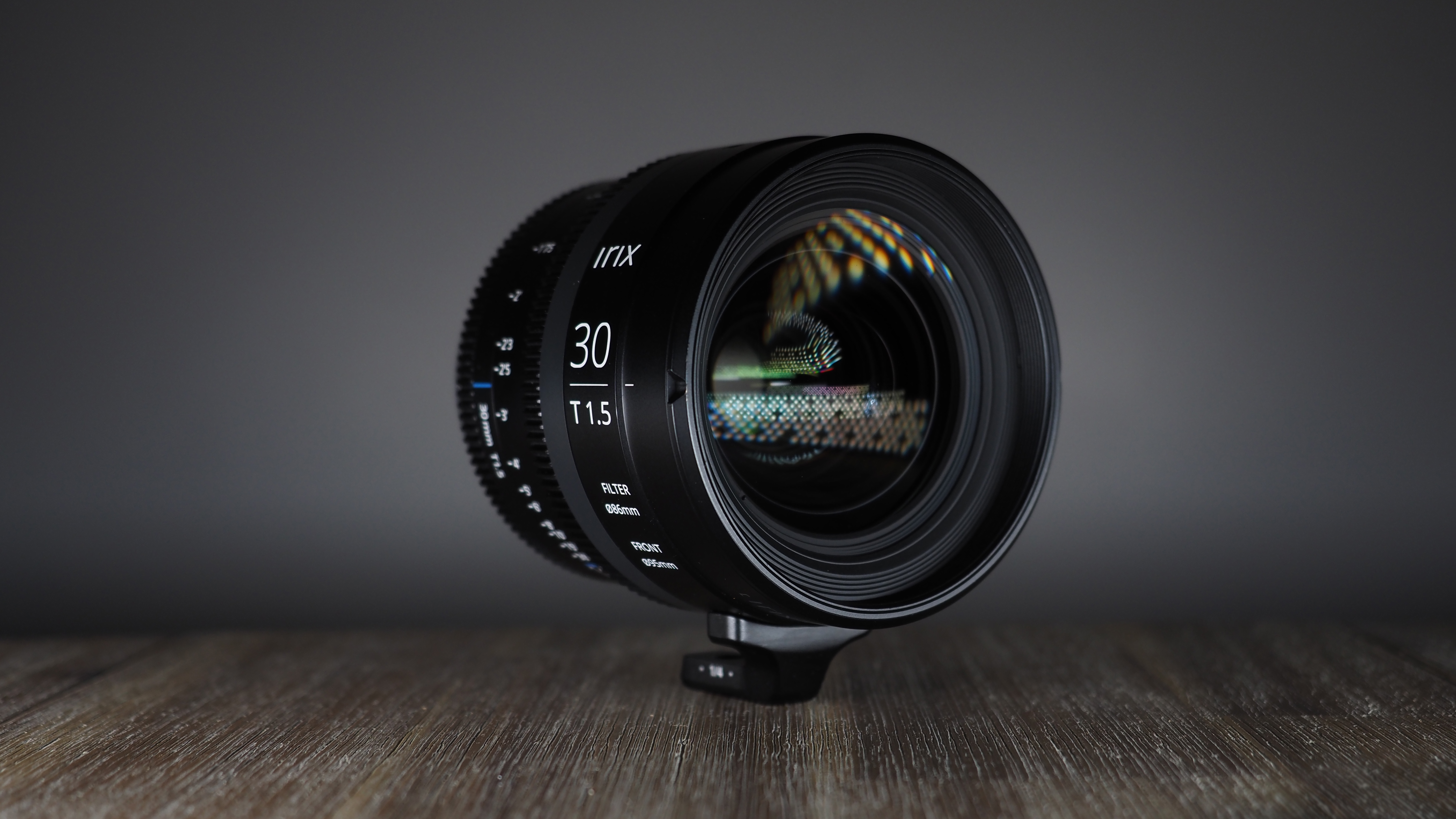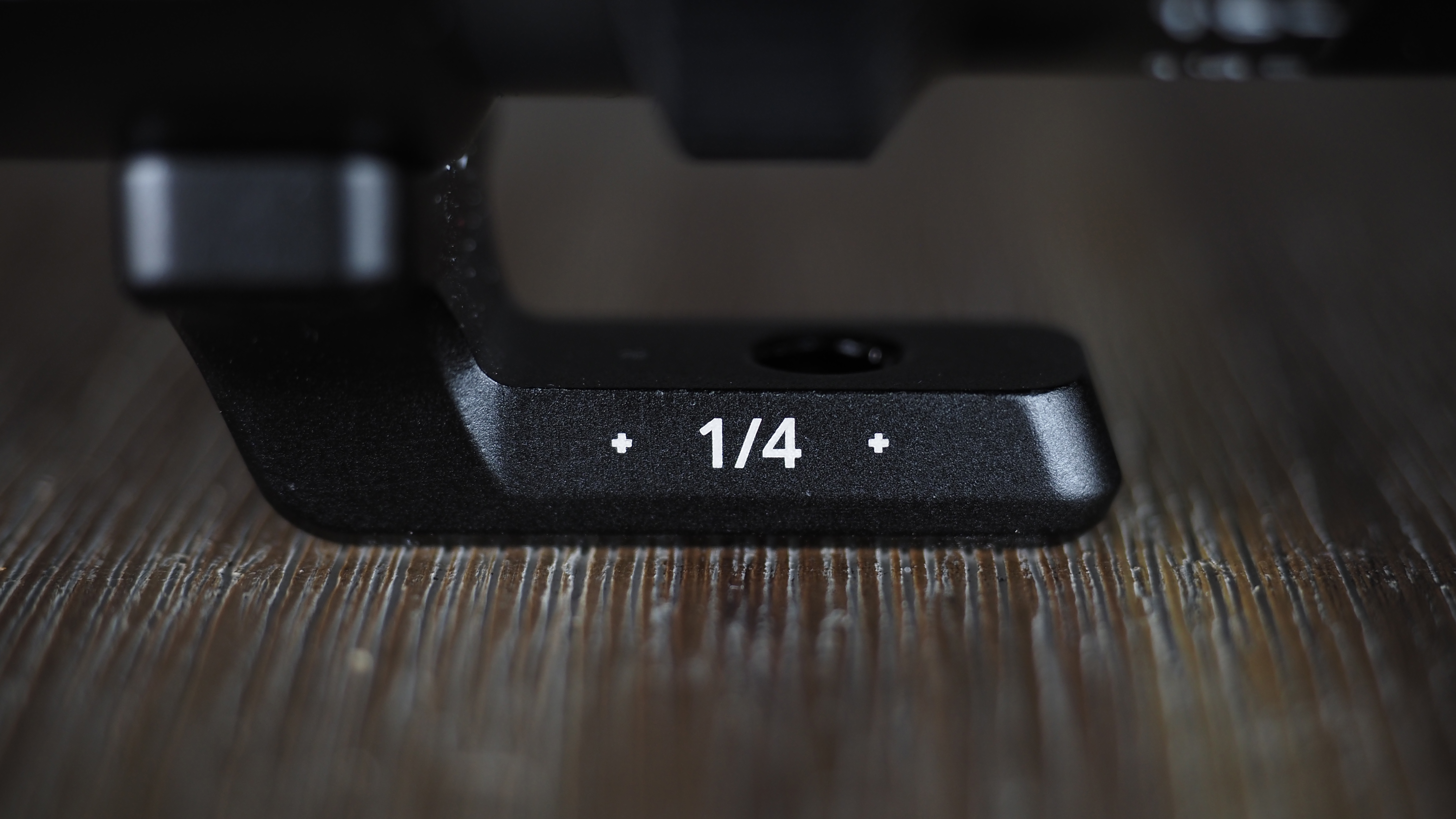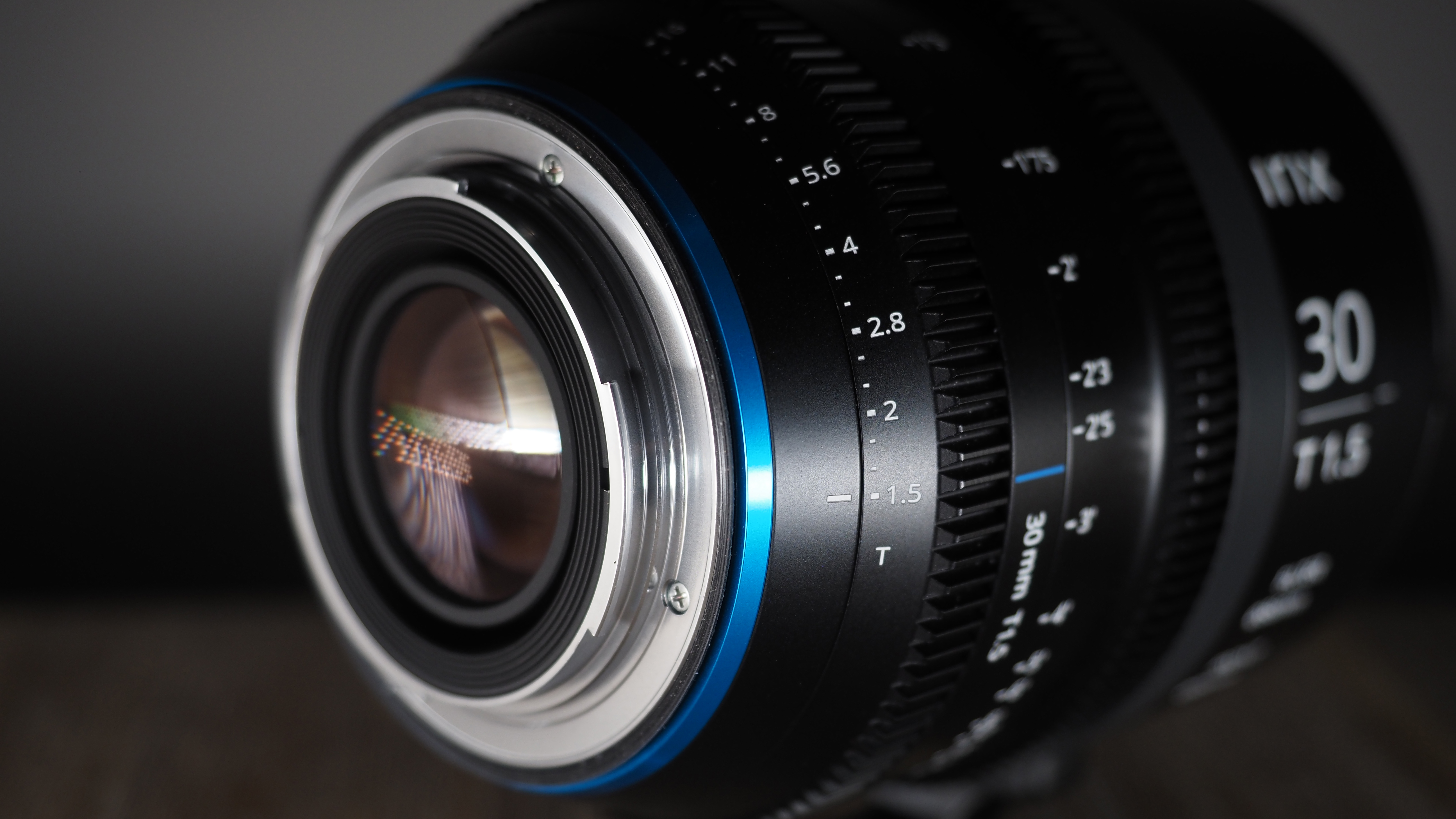Digital Camera World Verdict
The Irix Cine 30mm T1.5 is a formidable cinema lens, both capable in performance and competitive in price. Offering great sharpness, weather sealing, well controlled distortion and breathing, and an enviable T1.5 aperture for low light shooting and background blur, it packs all the punch of a premium cine lens but without the associated cost.
Pros
- +
Great cinematic look
- +
Minimal focus breathing
- +
Weather sealed
Cons
- -
Soft wide open at T1.5
- -
No electronic contacts
- -
Lens hood not included
Why you can trust Digital Camera World
The Irix Cine 30mm T1.5 is the manufacturer's latest addition to its ever-increasing range of competitively priced – and competitively performing – cinema lenses.
While it's the fifth lens in the lineup, the Irix Cine 30mm T1.5 may actually be the most useful all-purpose optic. It sits bang in the middle of Irix' 11mm T4.3, 15mm T2.6, 45mm T1.5 and 150mm T3.0, lenses, offering a versatile 30mm focal length that's ideal for documentary shooting, news and reporting, location and establishing shots, and of course B-roll.
• Read more: Best cine lenses | How are cine lenses different to regular lenses?
As useful as its focal length, however, is its bright T1.5 aperture, matching the Irix Cine 45mm lens for superb low light performance as well as stunning subject separation and dreamy depth of field.
Coming in a variety of mounts, from cinema staples Arri PL and Canon EF to every serious mirrorless filmmaking mount (sorry, Fujifilm), and with an $1,195 (approximately £866 / AU$1,614) price tag, it seems an irresistible proposition whether you're shooting on dedicated cinema kit like a Blackmagic Ursa Mini Pro 12K, Canon EOS C70 or Panasonic BGH1, or hybrid cameras like the Canon EOS R5, Nikon Z6 II or Panasonic GH5 II.
How does it perform? Let's find out.







Irix Cine 30mm T1.5: Specifications
Mount: Arri PL, Canon EF (tested), Canon RF, L mount, Micro Four Thirds, Nikon Z, Sony E
Full frame: Yes
Lens construction: 13 elements in 11 groups
Diaphragm blades: 11
Minimum aperture: T16
Closest focusing distance: 0.34m
Filter size: 86mm
Front diameter: 95mm
Geared rings: 0.8 M (119 teeth)
Focus ring throw: 180°
Aperture ring throw: 75°
Weather sealed: Yes
Dimensions: Arri PL 99x97 mm • Canon EF 107x97 mm • Canon RF 130x97 mm • L mount 131x97 mm • Micro Four Thirds 132x97 mm • Nikon Z 135x97 mm • Sony E 133x97 mm
Weight: Arri PL 1136g • Canon EF 1130g • Canon RF 1187g • L mount 1223g • Micro Four Thirds 1215g • Nikon Z 1227g • Sony E 1191g
The best camera deals, reviews, product advice, and unmissable photography news, direct to your inbox!
Irix Cine 30mm T1.5: Key features
The Irix Cine 30mm T1.5 is designed for UltraHD cinema cameras that resolve video in 8K, with an aspherical element, a pair of high reflective elements and a trio of extra-low dispersion elements (13 in total, in 11 groups).
Irix claims "an ultra-low -0.95% distortion" and "practically no focus breathing (below 1.5 degree in full range from 0.3m to infinity". Indeed, this is a very tight, well controlled lens in optical terms.
It possesses geared 0.8 M rings that, like other Irix Cine lenses, have been machined to recess into the silhouette of the body (rather than the teeth sticking out). This keeps the lens looking and feeling sleek, while also enabling you to position your follow focus anywhere you like.
Again like the rest of the Cine line, it features Irix' Magnetic Mount System that enables accessories like the lens hood (sadly not included) and Irix Edge filters to be quickly added, removed or combined without the need for accessories.



Irix Cine 30mm T1.5: Build & handling
Despite being a cinema lens, and a T1.5 one at that, the Cine 30mm is surprisingly small and light. Specs vary between mounts, but the Canon EF version we tested measures just 107x97mm and weighs 1,130g – made possible by the aluminum-magnesium alloy construction.
The focus ring has a smooth, well damped and precisely tuned 180° throw. And when shooting wide open at T1.5, having the same kind of control as a macro lens is incredibly valuable when maintaining fine focus.
A support foot provides a mounting point for tripods, rigs and follow focus systems, and can be attached either to the bottom of the optic (as standard) or the top depending on your setup.
The lens is weather sealed, with five rubber O-rings (four on the PL version), making this an invaluable tool for shooting in the elements – particularly when paired with a weatherproof body like the Canon EOS R5.
As you can see the lens is beautiful to behold, and handles magnificently whether as part of a well-attuned rig or as a handheld run-and-gun setup. The engraved distance markings and T-stops have been finished with UV-reactive paint, which is a welcome addition when filming in challenging light.
Best of all, if you hated the lens cap on the Irix Cine 45mm T1.5 (as most people did), the cap here has been redesigned. Not only is it very attractive, with the focal length clearly marked for at-a-glance retrieval from your bag, but it is now perfectly flat so you can sit the lens down.





Irix Cine 30mm T1.5: Performance
We're still evaluating the the Irix Cine 30mm T1.5, but so far we have zero complaints about how it performs.
You will see in our lab tests below that the Irix isn't at its best when shooting wide open at T1.5. However, while the lens undoubtedly hits peak sharpness from T2 to T8, in video terms rather than stills terms this still equates to pleasing sharpness even when shooting at 8K.
The three sample images below were all filmed at T1.5 in 8K DCI on the Canon EOS R5, and then frame grabbed at full 35MP resolution. As you can see, they are more than sharp enough for video purposes even at UltraHD.



Distortion really is incredibly well controlled, as is focus breathing. In the sample video footage below you can see a number of tests, including how the lens breathes wide open at T1.5 and stopped all the way down to T16. While a minute amount of breathing is observable, it really is very slight.
The visual characteristics of the lens are very pleasing. The bokeh wide open can be a little noisy, but the lens generally renders backgrounds as a dreamlike smear of impressionistic chatter.
It possesses a very cinematic flair reminiscent of far more expensive cine lenses – impressive not just for this lens in its own right, but especially for an optic that costs $1,200 as opposed to the add-a-zero price tags of big brand cinema glass.
Irix Cine 30mm T1.5: Sample footage
Watch video: Irix Cine 30mm T1.5 sample footage
Watch video: Irix Cine 30mm T1.5 lens behavior
Irix Cine 30mm T1.5: Lab data
We run a range of lab tests under controlled conditions, using the Imatest Master testing suite. Photos of test charts are taken across the range of apertures and zooms (where available), then analyzed for sharpness, distortion and chromatic aberrations.
We use Imatest SFR (spatial frequency response) charts and analysis software to plot lens resolution at the centre of the image frame, corners and mid-point distances, across the range of aperture settings and, with zoom lenses, at four different focal lengths. The tests also measure distortion and color fringing (chromatic aberration).
Sharpness:
Sharpness in the center of frame is excellent, from T2 through to T8. Move away from center and image quality soon gets softer, though this isn't too noticeable in real-world shooting. What is noticeable is the poor center sharpness wide open at T1.5, and this is the best result we achieved after multiple attempts.
Fringing:
Fringing is only apparent in the corners of frame, and only at apertures narrower than T2.8.
Distortion: -0.66
There's a trace of barrel distortion, but you won't notice it in everyday shooting – an impressive result.
Irix Cine 30mm T1.5: Verdict
The Irix Cine 30mm T1.5 is a formidable cinema lens, both capable in performance and competitive in price. Offering great sharpness, weather sealing, well controlled distortion and breathing, and an enviable T1.5 aperture for low light shooting and background blur, it packs all the punch of a premium cine lens but without the associated cost.
Our lab tests reveal that it's a little soft wide open, but this is far less of an issue with video compared to stills – and as you can see from the sample footage above, it's still more than sharp enough for crisp, detailed footage. And with the kind of bokeh it produces, we'll happily take a little hit in the sharpness stakes. Yet another home run for Irix' fledgling Cine line.
Read more:
Best cine lenses
Best cinema cameras
Best cameras for filmmaking
Best 8K cameras
Best cameras for video

James has 25 years experience as a journalist, serving as the head of Digital Camera World for 7 of them. He started working in the photography industry in 2014, product testing and shooting ad campaigns for Olympus, as well as clients like Aston Martin Racing, Elinchrom and L'Oréal. An Olympus / OM System, Canon and Hasselblad shooter, he has a wealth of knowledge on cameras of all makes – and he loves instant cameras, too.





